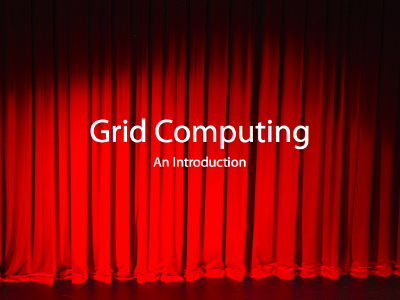How often have you been looking forward to the end of an presentation? Most presentations deal with interesting things, usually the speaker has something to tell. But why is it that we do not appreciate the presentations? When I see how Microsoft presents their new strategy, it is even visually ugly.
As a part of my job, I have to give a lot of presentations. So what if my presentations are boring as well? What if I want to communicate my ideas, but my presentation just doesn’t hit the mark? So I delved in the topic, here are my findings.
The quest starts with this post in Presentation Zen, which I consider essential reading by now (the blog as well as this post). Up to this point, I always though presentations have to be composed of bullets, each bullet outlining what you want to do. During presentation, you just talk about your bullets. Make an introduction, have a logical ordering. Just as you would do when writing an article.
But then, I saw that there is something else: The Lessig method. Read the article above, watch the movies. For the impatient: Basically, Lessig buts only a single word written in some typewriter font on a black transparency. There’s no distraction from what he has to tell. He tells a story, instead of presenting bullets.
If you go on to Dick Hardt’s presentation, you cross the border between presentation and entertainment. See it for yourself: movie link. There is something else than bullet points. Something serious to consider. Maybe it isn’t so difficult to give a presentation that allows your audience to follow your ideas.
However, these examples do not deal with scientific topics. As a researcher in computer science, I have to communicate abstract ideas that can not be easily connected with images and the like. Time for an experiment. I gave a Lessig-style presentation about my scientific work to other fellow Ph.D. students in Kaiserslautern. Most of them didn’t know my work, so this was about presenting the general ideas. You can download the presentation as a movie (german only).
This is not a perfect presentation (due to the recording, I hope to improve). But it shows that you can even communicate technical ideas Lessig-style. The audience’s feedback was really astonishing: During the presentation, there was a vibrant discussion. People understood my ideas. After the recording ended, I collected some opinions. No one rejected this style of presentation.
However, I have my doubts whether this presentation style suits a scientific conference.
But this part of the quest is to be discussed another time.
